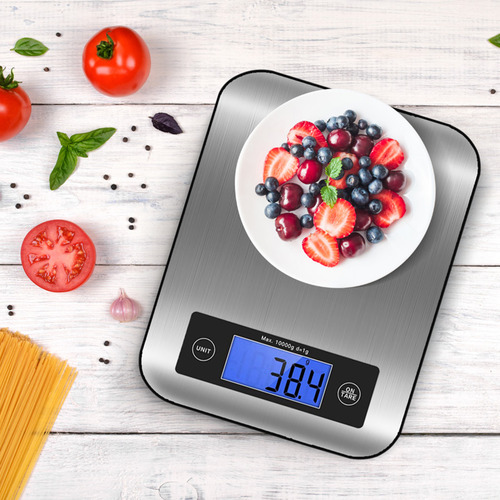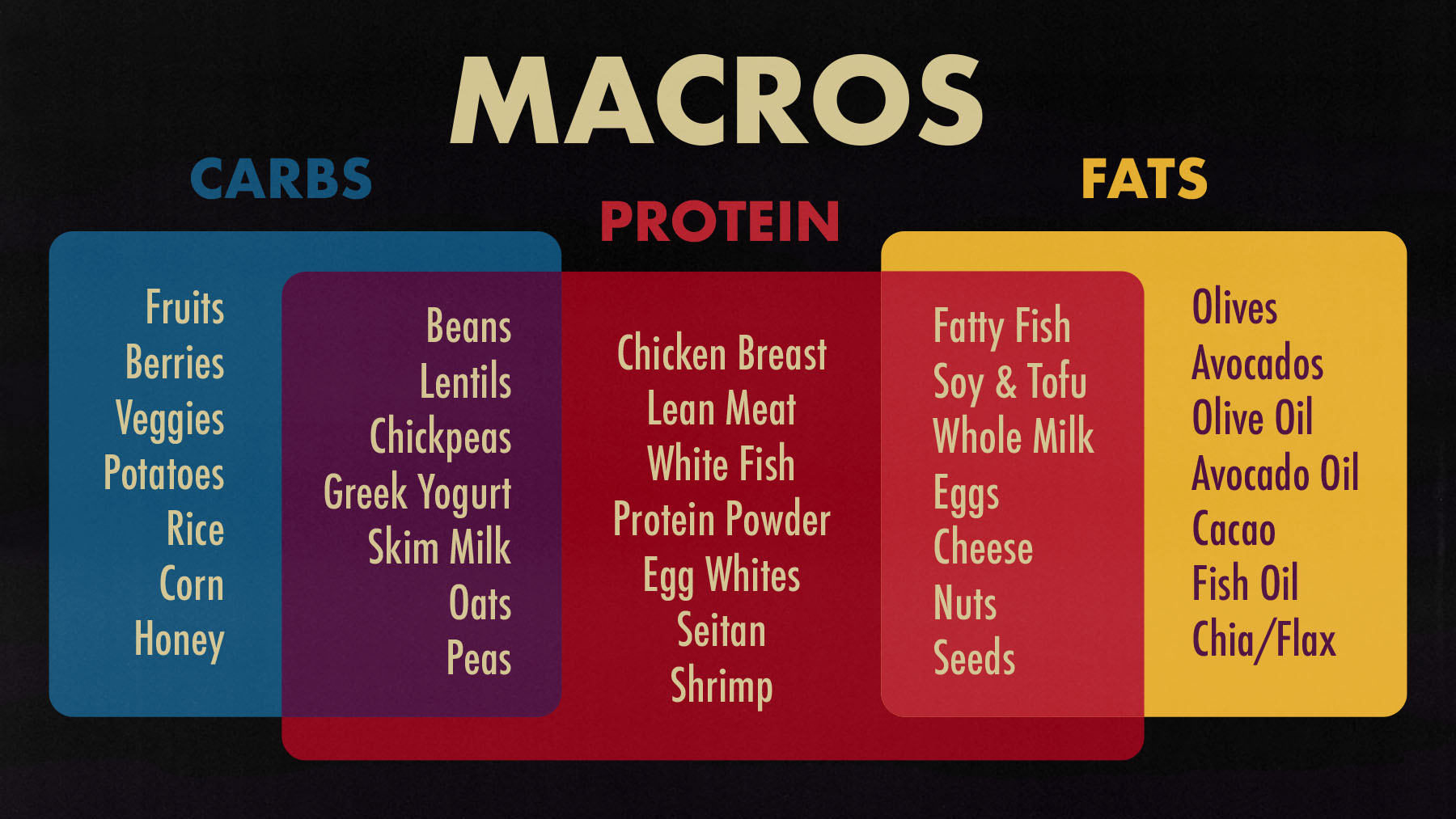Tired of restrictive diets that leave you feeling deprived and confused? You’re not alone. If you’ve ever wondered why some people seem to eat more food yet maintain their physique while others struggle despite eating “healthy,” the answer often lies in understanding macronutrients – or “macros” as they’re commonly called.
Macro counting isn’t just another diet trend. It’s a flexible, science-based approach to nutrition that gives you the freedom to enjoy the foods you love while still reaching your health and fitness goals. Whether you want to lose weight, build muscle, or simply feel more energized throughout the day, understanding macros can transform your relationship with food.
What Are Macros, Really?
Before diving into the counting part, let’s break down what macronutrients actually are. Think of macros as the three main building blocks of all the food you eat:
Protein – Your body’s repair crew. Every cell, muscle, and organ needs protein to function and rebuild. It’s found in meat, fish, eggs, dairy, beans, and nuts. Each gram provides 4 calories.
Carbohydrates – Your primary energy source. Despite what some diets claim, carbs aren’t the enemy. They fuel your brain, muscles, and daily activities. You’ll find them in fruits, vegetables, grains, and legumes. Each gram provides 4 calories.
Fats – Essential for hormone production, nutrient absorption, and brain function. Healthy fats come from sources like avocados, olive oil, nuts, and fatty fish. Each gram provides 9 calories.
The beauty of macro counting is that no food is off-limits. A slice of pizza and a grilled chicken salad both contain the same macronutrients – just in different proportions. This flexibility is what makes macro counting sustainable for the long term.
Why Count Macros Instead of Just Calories?
You might be thinking, “Isn’t a calorie just a calorie?” While calories do matter for weight management, the source of those calories makes a significant difference in how you look, feel, and perform.
Here’s why macro counting is superior to simple calorie counting:
Body Composition Changes – Eating adequate protein while in a calorie deficit helps preserve muscle mass during weight loss. This means you’ll look toned rather than just “skinny fat.”
Better Energy Levels – Balancing your macros prevents energy crashes. The right combination of carbs and fats provides steady fuel throughout the day.
Improved Satiety – Protein and fiber-rich carbs keep you fuller longer, making it easier to stick to your goals without constant hunger.
Metabolic Benefits – Your body uses different amounts of energy to digest each macro. Protein requires the most energy to process, giving your metabolism a slight boost.

Getting Started: Calculate Your Macro Goals
The thought of calculating macros might seem overwhelming, but it’s simpler than you think. Here’s a step-by-step approach that works for most beginners:
Step 1: Determine Your Daily Calorie Needs
Start with a basic calculation using your age, gender, weight, height, and activity level. Online calculators can give you a starting point, but remember – these are estimates. You’ll adjust based on your results over time.
Step 2: Set Your Protein Target
Aim for 0.8-1.2 grams of protein per pound of body weight. If you’re active or trying to build muscle, lean toward the higher end. For a 150-pound person, this means 120-180 grams of protein daily.
Step 3: Calculate Fat Intake
Fats should make up 20-35% of your total calories. This ensures proper hormone function and nutrient absorption. For someone eating 2000 calories, that’s about 44-78 grams of fat daily.
Step 4: Fill in with Carbohydrates
After determining protein and fat, the remaining calories come from carbs. Don’t fear carbohydrates – they’re your friend, especially if you’re active.
The Tools You’ll Need
Successful macro counting requires the right tools, but you don’t need to break the bank:
Food Scale – This is non-negotiable for accuracy. Eyeballing portions leads to significant errors. A basic digital scale works perfectly.
Macro Tracking App – MyFitnessPal, Cronometer, or Lose It make logging food simple. Most have extensive databases and barcode scanners.
Measuring Cups and Spoons – Useful for liquids and foods that are difficult to weigh.
Meal Prep Containers – Not essential, but helpful for portion control and planning ahead.
Making Macro Counting Work in Real Life
The key to success with macro counting is making it fit your lifestyle, not the other way around. Here are practical strategies that actually work:
Start Simple – Don’t try to hit your macros perfectly from day one. Focus on getting close to your protein target first, then gradually dial in the other macros.
Prep When Possible – Batch cooking proteins, chopping vegetables, and portioning snacks on weekends saves time and reduces decision fatigue during busy weekdays.
Learn Your Staples – Memorize the macro content of foods you eat regularly. A medium banana has about 25g carbs, a large egg has 6g protein and 5g fat. This knowledge makes quick mental calculations easier.
Build Flexible Meals – Create meal templates rather than rigid meal plans. For example: protein + starchy carb + vegetables + healthy fat. This approach allows variety while maintaining structure.
Plan for Social Situations – Look up restaurant menus ahead of time, save macros for dinner out, or eat lighter earlier in the day. Macro counting should enhance your social life, not restrict it.
Common Beginner Mistakes to Avoid
Learning from others’ mistakes can save you time and frustration:
Perfectionism Paralysis – Don’t get hung up on hitting your macros exactly. Being within 5-10 grams of each target is perfectly fine.
Ignoring Fiber – While fiber isn’t a macro, it’s crucial for digestion and satiety. Aim for 25-35 grams daily from fruits, vegetables, and whole grains.
Under-eating Fat – Many people fear fat due to outdated nutrition advice. Adequate fat intake is essential for hormone production and feeling satisfied after meals.
Forgetting Liquids – Beverages count too. That latte, protein shake, or glass of wine all contribute to your daily macros.
All-or-Nothing Mentality – One imperfect day doesn’t ruin your progress. Consistency over perfection is what drives long-term results.
Sample Day of Macro-Friendly Meals
Here’s what a balanced day might look like for someone targeting 150g protein, 60g fat, and 200g carbs:
Breakfast – Three-egg omelet with spinach and cheese, plus a slice of whole grain toast with avocado. (35g protein, 25g fat, 30g carbs)
Lunch – Grilled chicken salad with mixed vegetables, quinoa, and olive oil dressing. (40g protein, 15g fat, 45g carbs)
Snack – Greek yogurt with berries and a small handful of almonds. (20g protein, 10g fat, 25g carbs)
Dinner – Baked salmon with sweet potato and steamed broccoli. (35g protein, 15g fat, 35g carbs)
Evening Snack – Protein smoothie with banana and spinach. (25g protein, 5g fat, 30g carbs)
This adds up to approximately 155g protein, 70g fat, and 165g carbs – close enough to the targets while providing variety and satisfaction.
Adjusting Your Macros Based on Results
Macro counting isn’t a “set it and forget it” approach. Your needs change based on your results, activity level, and goals:
Not Losing Weight? – Reduce total calories by 100-200, primarily from carbs and fats while maintaining protein.
Losing Too Quickly? – Add calories back, focusing on carbs around your workouts for better performance.
Feeling Low Energy? – Ensure you’re not under-eating carbs, especially if you’re active.
Always Hungry? – Increase protein and fiber intake. Sometimes a macro redistribution works better than increasing total calories.

Beyond the Scale: Other Measures of Success
While the scale provides feedback, it doesn’t tell the whole story. Track these additional metrics:
Body Measurements – Waist, hips, arms, and thighs can change even when weight stays the same.
Progress Photos – Visual changes often occur before the scale moves.
Energy Levels – Stable energy throughout the day is a sign your macros are well-balanced.
Sleep Quality – Proper nutrition supports better sleep, which in turn supports your goals.
Performance – Whether it’s lifting heavier weights or running faster, performance improvements indicate your nutrition is on track.
Making It Sustainable Long-Term
The goal isn’t to count macros forever. Think of it as a learning phase where you develop intuition about portion sizes and food combinations. Most people find they can transition to more intuitive eating after 3-6 months of consistent tracking.
Start with a 30-day commitment. This gives you enough time to learn the system without feeling overwhelmed by a long-term commitment. Many people find that once they start seeing results and feeling better, continuing becomes natural.
Remember, the best nutrition plan is the one you can stick to consistently. Macro counting provides structure and flexibility, but it should never feel like punishment. If you find yourself becoming obsessive or anxious about hitting your numbers, take a step back and focus on the bigger picture – eating a variety of nutritious foods in appropriate portions.
Your Next Steps
Ready to give macro counting a try? Start with these actionable steps:
- Calculate your baseline calorie and macro needs using the guidelines above
- Download a tracking app and spend a few days logging your current intake without changing anything
- Invest in a food scale and practice weighing common foods
- Choose one macro (usually protein) to focus on for the first week
- Gradually work toward hitting all three macros as you become more comfortable
Macro counting isn’t magic – it’s simply a tool that helps you make informed decisions about your nutrition. Like any skill, it takes practice to master. Be patient with yourself as you learn, celebrate small wins along the way, and remember that progress, not perfection, is the goal.
The freedom to eat foods you enjoy while still reaching your goals is liberating. No more wondering if you’re eating “enough” or “too much.” No more labeling foods as “good” or “bad.” Just balanced nutrition that supports your lifestyle and helps you feel your best.
Your journey to better health doesn’t have to be complicated or restrictive. Sometimes the most sustainable approach is simply understanding what you’re putting into your body and making informed choices that align with your goals. Macro counting gives you that power – and that’s something worth chalking up as a success.
